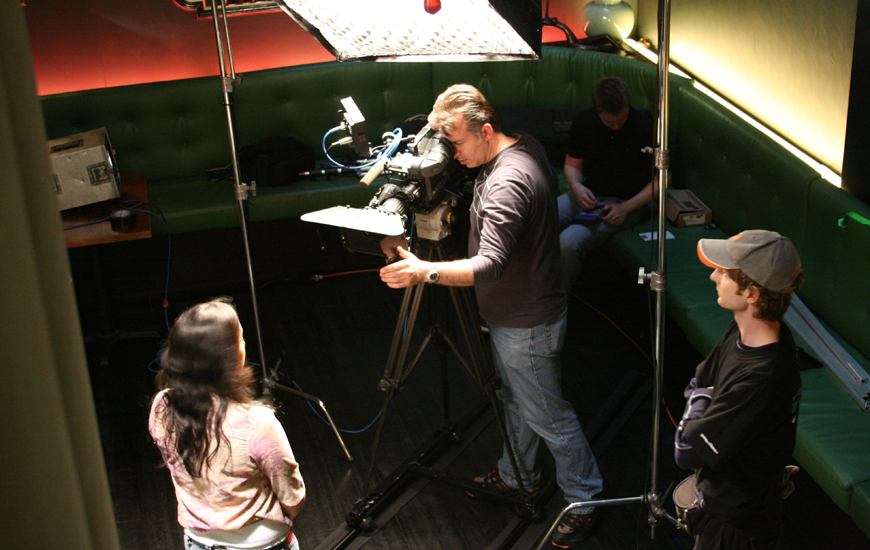THE CINEMATOGRAPHER / DIRECTOR OF PHOTOGRAPHY
A cinematographer is also often known as a Director of Photography (DP or DOP). The cinematographer is the chief of the camera department, and directs the camera operators on how to achieve the desired look of each scene. They choose what the best camera angles, placement and movement will be to effectively tell the story. Generally, on larger projects, the cinematographer usually does not physically handle the camera equipment, but on smaller video shoots, they may be the camera operator as well.

CINEMATOGRAPHY SHOWREEL
THE ROLE OF THE CINEMATOGRAPHER WITHIN THE WIDER PRODUCTION TEAM
The cinematographer works closely with the director and the producer and contributes technically throughout the entire process of the video production. Generally, the cinematographer will have more technical knowledge than the director, and can assist in determining what kind of look and feel is realistically achievable for the video, given any restraints on time, budget and equipment available for the shoot.
The cinematographer will also help ensure visual consistency throughout the entire filming process.
A CINEMATOGRAPHER WORKS WITH THE DIRECTOR TO DETERMINE THE FOLLOWING:
- How will the shots be framed? Will each particular shot be a close up, medium or wide shot?
- What will the camera movement be for the shot – Will the camera zoom, pan or tilt throughout the course of a particular shot? Or, will it stay perfectly still?
- What lenses and other equipment will be used to achieve the look? Will any coloured gels or filters be required?
- How will the scene be lit? If shooting is taking place indoors, is natural light from a window, door or skylight sufficient, or will extra lights need to be brought in to adequately light the room?
It’s important to remember that all chosen camera angles and movements must have a specific effect that they are trying to achieve – everything should be deliberate. The way that subjects are placed on camera sends subtle messages to the audience about what kind of person they are (in the context of the video, of course). For example, placing a camera below the speaker’s eye level will make their character seem more authoritative.
CINEMATOGRAPHERS’ ROLES IN POST-PRODUCTION
The cinematographer may be involved throughout part of the editing process – they could be present to make decisions on things like colour grading, to ensure that things are being edited together in a way that fits the original visual plan.
Rocket Productions has a team of highly skilled, award-winning cinematographers who will bring your creative vision to life. They’ll know exactly which visual elements – from shots, angles and camera movements – to capture to effectively convey your message, and get the response that you want from your audience.
To find out more about how our experienced cinematographers can help you create a visually stunning and memorable video, contact us today.
